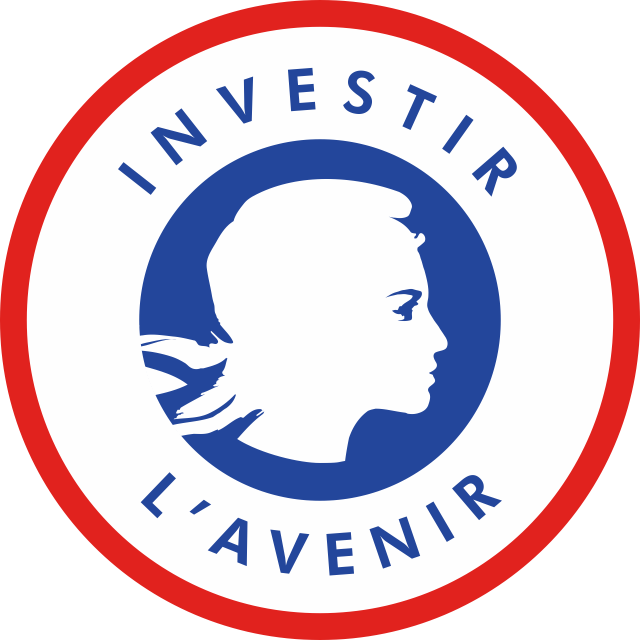2020 CLand Interns

Mr. Aghiles BEN SIDERAghiles did an internship at EGCE (Evolution Genomes Comportement Ecologie) and is interested in developing and setting up a network of sensors to collect climate measurements as close as possible to what insects will experience. The first step was to define the variables of interest, and then the different types of sensors available and their characteristics. The temperature, relative humidity, soil humidity and wind speed were taken into account. Then, he compared the different models of sensors available in order to choose the most suitable for the project, that is to say minimize costs, better reliability and accuracy of measurement and use adapted to the external environment for insects. Aghiles is now building three-dimensional printer models to host each sensor and its associated microcontroller. Acquired data will be sent using radio frequency to a gateway sending the data to a server hosting a storage and visualization application. This work is part of a scientific program aimed at better characterizing the dynamics of insect pests and proposing predictive models to reduce crop losses and thus contribute to food security in the context of climate change. |
|
|
|
Mr. Matthieu DESCOUTHigh Nitrates concentration in rivers is one of the main issue concerning water pollution and raises big concerns about human health and eutrophication. The agricultural sector is often targeted as being the main source of this water degradation, due to the use of mineral fertilizers. But Nitrates concentration fluctuates aver time because nutrients transfers from agricultural landscapes result from changing hydrological and biogeochemical processes (discharge, retention rate, residence time of nutrients, etc.) controlling their mobilization and delivery in the terrestrial and aquatic compartments of catchments. |
 |
Ms. Johanna HARLE
|
|
Mr. Florent LELENDA KEBALOThere is an increasing use of digestates as organic fertilisers in agriculture but they are sensitive to ammonia volatilisation. The latter has consequences on the environment, agriculture and human health: its control requires better knowledge regarding the underlying factors as well as their integration into modelling. The ability of the Volt’Air model to predict ammonia volatilisation after field application of digestates was assessed by using experimental data mainly collected in the field but also under controlled conditions, as part of two recent projects, MetaMetha and EVAPRO. Study showed a correlation between ammonia volatilisation rate and digestate characteristics, dry matter content and pH, as well as meteorological variables such as rain, temperature and wind speed over two days. The results revealed that ammonia volatilisation is overestimated by Volt’ Air after digestate spreading in both the field and under controlled conditions. Some explanations are suggested: the datasets do not allow to validate that the infiltration is adequately modeled, so this point requires a more in-depth study; on the other hand, it is clear that the effect on volatilisation decrease due to the presence of plant cover is not taken into account. Furthermore, the results highlighted the propensity of Volt' Air to properly simulate the start of ammonia volatilisation subsequent to liquid digestate application. However the volatilisation extends beyond what is measured. It is likely that different processes consuming ammoniacal nitrogen, such as nitrification, equilibria (that decrease ammonia availability) and adsorption are either not or not well modeled. The good adequacy at the start of the volatilisation period, as well as the Volt’Air model's ability to integrate new effects and / or modules is a promising sign of its potential to make a better prediction after been improved. |
Mr. José HOLGUINDuring my internship, my study accounted for the environmental impacts of a Building Integrated Non Conditioned (BI-NC) rooftop farm in Paris, France. Through LCA methodology we have compared the urban farm to conventional food supplies. We have contributed to UA from a quantitative perspective in order to help develop the area in a more sustainable way. The environmental impacts directly relate to the farming methods, materials used, amount of yield, and crop time. Keeping this in mind, this study supports the fact that BI-NC systems are more efficient and have less environmental impacts than conditioned systems (e.g. farms with greenhouses). We analyzed the results of all the crops aggregated together and of tomatoes separately in both cases the results shown to have lower GWP than monocrop tomato farms in France and Morocco. The results for the farm considering the aggregation of all crops were 0.4KgCO 2 eq and for tomatoes 0.348 KgCO 2 eq. Thus, making the farm more efficient in comparison to other conventional and urban farms. |
|
Ms. Zwanga RATSHIKOMBOThe dietary choices of herbivores are largely influenced by the chemical and nutritional composition of plant species in their habitat. The nutritional quality of plants differs within and across species as a function of different growing stages and environmental conditions. Understanding the difference in nutritional composition of wild and cultivated plants is essential to predict how environmental changes will affect feed quality and the consequences for domestic and wild animal health. The objective of this project was to collect nutritional and chemical composition of wild and cultivated animal food across the world. More than 2000 records across more than 50 countries were recorded which included almost 1000 plant species between wild and crops (including trees, grasses, lichens, mosses, forbs) and their vegetative parts (bark, leaves, flower, fruit, stem, shoot, seed, twig, whole plant). These data will be used to make future projections on how climate change will affect plant nutritive values and the repercussions for wild and domestic animals. |
|
|
Ms. Ruizhen WANGMy internship is focused on the construction of a model of animal production at the regional-landscape scale starting from livestock diet, in terms of quantity and quality. The model will be the embedded in an existing model of nitrogen fluxes and agricultural production (crops and livestock) at the regional scale. At a qualitative level, the internship will be focused also on the bibliographic research of the impacts of diet composition on animal welfare and production quality (according to both consumer preferences and nutritional criteria). Starting from this information some scenarios will be developed for simulating the impact of different diets on a set of indicators at the regional scale, such as animal production, feed-food competition, feed import needs, methane emissions from ruminant enteric fermentation, and (qualitatively) on animal welfare and milk and meat quality. |



